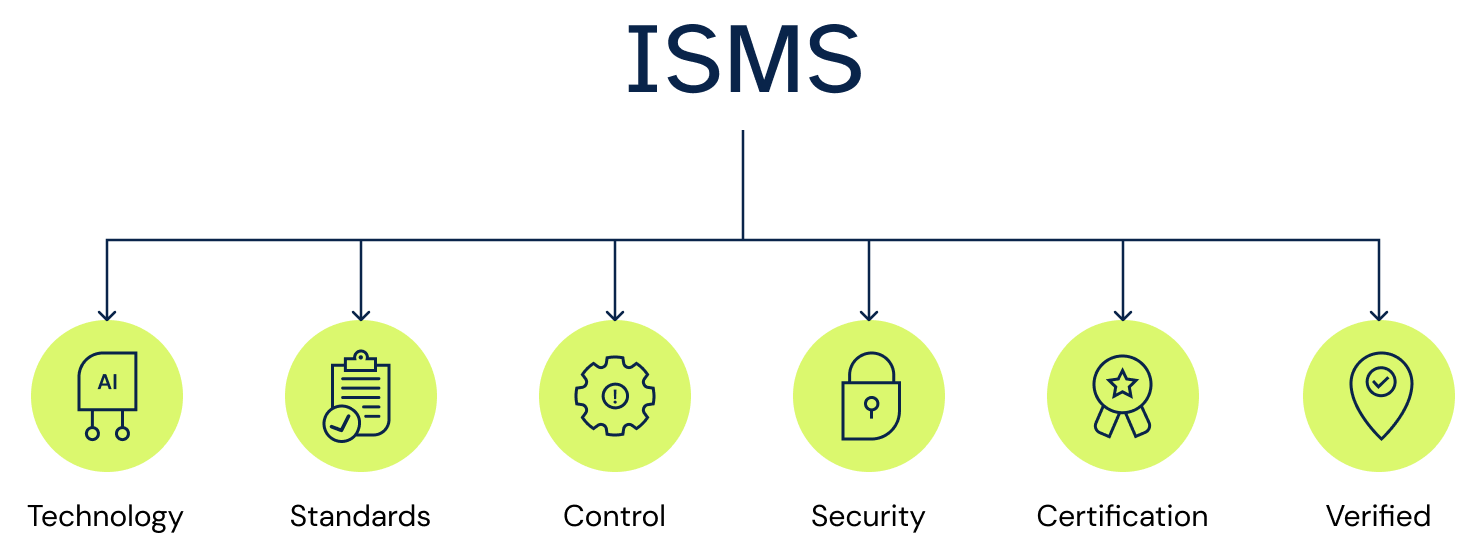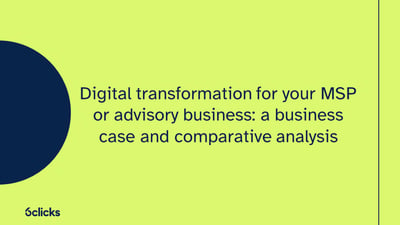Managed service providers (MSPs) play a vital role in fostering the growth and enhancing the performance of businesses. They ensure that IT systems are operational and usable, that data are accessible to users, and that businesses achieve optimum efficiency and productivity.
Since they are in charge of overseeing and maintaining IT systems and infrastructure, MSPs must also be committed to delivering robust cybersecurity solutions to businesses and customers.
Forbes identifies the rise of new cybersecurity regulations as an emerging trend in 2024 due to the potential risks to national security and the economic impact posed by cyber threats. Meanwhile, Cybersecurity Ventures predicts that global cybercrime damage will reach $9.5 trillion this year, further stressing the need for organizations to implement stronger cybersecurity measures.
To stay ahead of evolving cybersecurity challenges, MSPs must adopt effective solutions to continue offering secure, reliable, and scalable products and services to their customers. Let’s discuss the current issues faced by businesses of all sizes and the top cybersecurity solutions that can empower MSPs to level up their security offerings:
The current cybersecurity landscape and emerging threats
As we move further into 2024, the cybersecurity landscape for businesses in various domains anticipates increasing challenges.
Small and mid-sized businesses (SMBs) are becoming a more common target of cybercriminals. In their 2023 Business Impact Report, the Identity Theft Resource Center found that 73% of SMBs from top industries like financial services and technology experienced either a cyberattack, data breach, or both in the last 12 months.
This indicates that cyberattack trends for both SMBs and large businesses are becoming more similar in terms of frequency and pattern, which aligns with Verizon’s findings in their 2023 Data Breach Investigations Report.
On the other hand, while technological advancements have facilitated digital transformation, they also introduce accompanying security threats. Cyberattacks have become more prevalent and sophisticated, taking on various forms such as:
- Ransomware attacks – Cybercriminals use malware to encrypt files and deny organizations access to their data, demanding ransom payments in exchange for decryption keys. Ransomware attacks can incapacitate critical business systems, lead to financial losses, and prevent institutions from delivering crucial services.
- Social engineering attacks – Phishing is the most common type of social engineering where individuals are targeted by cybercriminals posing as legitimate institutions to trick them into sharing confidential information or downloading malware. Phishing attacks comprise the majority of cyberattacks against businesses and can create long-term damage to an organization’s reputation.
- Data breaches – The unauthorized extraction of protected information and infiltration of an organization’s data source can disrupt business processes, compromise the trust of customers and stakeholders, and result in significant revenue loss.
- IoT attacks – Internet of Things (IoT) systems, devices, and networks that lack security protocols are prone to vulnerabilities that can be exploited, potentially serving as entry points for cyberattacks. IoT malware attacks have also increased by 87% by the end of 2022 according to the 2023 SonicWall Cyber Threat Report.
- AI-powered cyberattacks – Aside from AI-powered malware and phishing attacks, AI and machine learning (ML) algorithms can be used to find and exploit software vulnerabilities or identify patterns and hack into security systems. The capacity of AI for more precise and efficient attacks presents an alarming threat to organizations.
- Cloud attacks – Cloud computing systems, services, and applications are also susceptible to malicious activities such as DoS and DDoS attacks, account hijacking, and malware injection. According to Thales’ 2023 Cloud Security Report, cloud assets are the biggest targets for cyberattacks, with 75% of businesses storing more than 40% of sensitive data in the cloud.
New opportunities unlocked
Considering all of these factors, forthcoming challenges in the cybersecurity landscape can also mean new opportunities and unlimited possibilities for MSPs.
Now that SMBs are acknowledging the compelling need for cybersecurity, the demand for expert cybersecurity services will inevitably rise. MSPs can respond to this growing demand by offering comprehensive client protection and equipping their customers with proactive cybersecurity solutions, differentiating themselves from competitors and harnessing the potential for revenue growth in the process.
Another opportunity for MSPs is to adapt and evolve in tandem with the cybersecurity landscape and tailor their vCISO services to address the unique challenges experienced by SMBs and enterprises. MSPs can establish themselves as trusted security advisors who can guide organizations in navigating various cybersecurity risks and threats and play a crucial role in educating their clients on how to leverage technologies like AI while ensuring robust cybersecurity integration.
Must-have cybersecurity solutions for MSPs
Providing comprehensive security solutions and industry-leading expertise can allow you to meet the dynamic needs of your clients and position your business at the forefront of innovation. Here are some cybersecurity solutions worth looking into this 2024:
Information Security Management Systems (ISMS)
An information security management system establishes the capacity of an organization for information security and privacy. It is made up of policies and controls implemented by an organization to manage and safeguard sensitive data and assets. With an ISMS, managed service providers can help organizations:
- Standardize policies, processes, and tools for security
- Safeguard the availability, confidentiality, and integrity of information
- Identify and address threats against valuable data
- Conduct regular audits to ensure that security measures are in place and data is secure and up-to-date
- Set strict criteria for access and trigger alerts for any suspicious activity

An ISMS is required for organizations to demonstrate their information security policies, procedures, and controls and ensure compliance with regulatory standards such as the ISO/IEC 27001.
ISO 27001 details the requirements for an ISMS and is the global standard for information security management. Obtaining an ISO 27001 certification enables organizations to prove the resilience of their ISMS against security breaches.
By implementing an ISMS, organizations can improve their security processes and strategies to foster growth and development. It also helps them strengthen customer relationships by showing their commitment to robust information security practices.
Responsible AI
The world of cybersecurity is just one of the many realms where the power of artificial intelligence reigns above other technologies. Here are several applications of AI in fighting cyber threats:
- Faster threat detection – AI-powered solutions can monitor user activity to detect abnormal behavior that may indicate security threats. This allows organizations to identify potential cyberattacks in real time and address them more quickly.
- Automated incident response – AI can reduce response times and minimize the impact of security incidents by automating routine tasks such as isolating compromised systems, blocking malicious activities, and notifying security teams.
- Security process automation – AI can automate diverse security processes such as patch management to fix vulnerabilities and optimize performance. With AI, organizations can streamline processes and enhance their overall cybersecurity posture.
- AI-powered analytics – AI-driven behavioral analytics allows organizations to better understand their systems by recognizing behavioral patterns and establishing a baseline for normal behavior to instantly detect deviations. Organizations can also use AI to analyze vast amounts of data to identify trends, generate actionable insights, and help them make informed security decisions.
Beyond cybersecurity, automation, and data analytics, the applications of AI are virtually endless, which is why policymakers have instituted regulations to govern its use.
Organizations developing and deploying AI-driven products and services must adhere to responsible AI practices, which involve the ethical, transparent, and trustworthy use of AI. The principles of responsible AI include accountability, fairness, inclusiveness, reliability, and safety.
MSPs can offer responsible AI compliance services to their clients and help them incorporate frameworks and standards into their existing organizational structures to ensure adherence to responsible AI practices.
6clicks’ Responsible AI content pack includes the NIST AI Risk Management Framework and ISO 42001 AI Management System standard along with AI risk libraries, system impact assessment templates, and controls. Using these Responsible AI solutions together with 6clicks’ Risk Management platform, MSPs can empower organizations to properly assess and treat risks associated with AI systems.
Regulatory compliance
Regulatory compliance is the process of complying with external legal mandates such as laws, standards, and regulations and aligning them with internal policies and procedures.
Governments and regulatory bodies such as the United States Department of Defense, ISO, and European Union issue intricate regulations and compliance frameworks and impose cybersecurity requirements on organizations to uphold the integrity of their business processes and protect public interest.
MSPs can offer organizations regulatory compliance solutions to enable them to get certified in various cybersecurity regulations, frameworks, and standards that apply to the industries they operate in. These can include the following:
- UK Cyber Essentials – Equips organizations with a set of technical controls to guard themselves against common cybersecurity threats
- NIST Cybersecurity Framework – Provides organizations with a comprehensive guide outlining best practices for safeguarding systems against cyberattacks
- ISO 27001 – Offers guidance on establishing, implementing, maintaining, and continually improving an information security management system
- Digital Operational Resilience Act (DORA) – A regulatory framework for cybersecurity risk management in the financial services sector
- Cybersecurity Maturity Model Certification (CMMC) – Consists of information security requirements by the US Department of Defense to protect sensitive information shared with contractors and subcontractors
Through 6clicks’ Regulatory Compliance solution, MSPs can support organizations in maintaining compliance with these cybersecurity laws and regulations and identifying areas of non-compliance. 6clicks’ Policy and Control Management also allows organizations to efficiently manage internal controls and obligations and set tasks and responsibilities to meet compliance requirements.
Demonstrating compliance and keeping up-to-date with new developments in the regulatory landscape can enable organizations to ensure the success and safety of their business activities.
Cyber risk management
Cybersecurity risk management is a strategic approach to identifying, analyzing, evaluating, and addressing cybersecurity threats. This involves the process of cyber risk assessment where an organization defines its information assets, data, systems, and networks and the risks surrounding them as well as the security vulnerabilities that can expose them to threats.
Once cyber risks have been determined, an organization’s cyber risk management program establishes how it will prioritize and respond to these risks. A resilient cyber risk management strategy can protect an organization from a wide range of cybersecurity attacks including data breaches, phishing attacks, and more.
MSPs can augment an organization’s cyber risk management strategy through robust cyber risk management solutions. 6clicks’ Cyber Risk Management program allows MSPs to effectively identify, measure, and treat internal and external risks through automated risk assessments, comprehensive risk registers, and powerful analytics.
It also enables organizations to define their tolerance for risks, streamline workflows and expedite risk treatment, and incorporate internal controls and external compliance requirements into their risk management efforts.
With an integrated risk and compliance platform, MSPs can support their clients in optimizing cyber risk management and compliance.
Third-party risk management
A critical aspect of cyber risk management includes protecting an organization against risks that may arise from its third-party relationships. Third-Party Risk Management (TPRM) involves analyzing, managing, mitigating, and reducing risks posed by third-party service providers such as suppliers, vendors, contractors, and business partners.
Enforcing a third-party risk management program allows organizations to avoid potential issues in their supply chains that can impact their ability to serve customers or deliver products and services.
MSPs can empower organizations to effectively manage risks across their supply chains using 6clicks’ Vendor Risk Management solution. Organizations can seamlessly onboard and categorize all their third-party providers based on their associated risks using the Vendor Risk Profiling feature and custom vendor fields for more accurate data recording.
Using the 6clicks platform, MSPs can help organizations perform automated assessments and monitoring and access ready-made vendor assessment questionnaires and other custom reports and templates from the Content Library that they can utilize for various risk and compliance needs.
By incorporating third-party risk management into their overall risk management strategy, organizations can enhance the security of their external relationships and safeguard their internal operations.
Endpoint protection
The protection of endpoints such as smartphones, laptops, desktop computers, and other end-user devices is an essential part of a foolproof cybersecurity strategy. This involves furnishing endpoints with network and device-level defenses.

At the network level, organizations can restrict their attack surface and enforce security policies such as blocking the access of insecure devices to the corporate network and sensitive data. At the device level, software can be installed to monitor, control, and protect devices whether or not they are connected directly to the enterprise network.
MSPs can provide their clients with three main types of endpoint protection solutions:
- Endpoint Protection Platform (EPP) – Serves as the first line of defense against cyberattacks by identifying file-based and fileless malware, detecting malicious activity, and preventing these threats from compromising systems and networks
- Endpoint Detection and Response (EDR) – Acts as the second line of protection by providing real-time detection and automated response to cyber threats, including incident triaging, threat hunting, and endpoint data analytics
- Extended Detection and Response (XDR) – An integrated, multi-layer solution to threat prevention, detection, and response with extended capabilities such as Tactics, Techniques, and Procedures (TTPs) analysis, behavior analysis, and threat intelligence and telemetry data
Endpoints are often the initial targets for attackers, but they also stand as the first line of defense in an organization’s security system. By implementing strong endpoint security, MSPs can help organizations pinpoint and reduce risks and be fully armed to fight cyberattacks.
Network security
Network security covers the processes, policies, and tools employed by an organization to safeguard its computer network, including systems, applications, and data from cyber threats. It ensures the reliable access and secure sharing of data within the organization while optimizing network performance.
There are different types of network security solutions that MSPs can offer clients:
- Firewalls – Monitor and control incoming and outgoing traffic on networks based on predefined security rules. Firewalls are at the forefront of network security since they block malware and application layer attacks
- Antivirus and anti-malware – These programs can prevent, detect, and remove viruses and malicious software from computers, networks, and other devices. Antiviruses monitor programs and check files for known malware while anti-malware prevents new malware from being installed
- Access control – Enables organizations to authorize access to network applications and systems exclusively for designated users and devices. It can be integrated with Identity and Access Management (IAM) and Role-based Access Control (RBAC) mechanisms to assign permissions to users and their devices based on their role in the organization
- Intrusion Detection and Prevention Systems (IDS & IPS) - These technologies detect and prevent network security attacks such as Denial of Service (DoS) attacks and exploits of system vulnerabilities. An IDS monitors and analyzes network traffic while an IPS controls it and blocks known security threats
- Cloud network security – Protecting cloud assets is also integral to network security. Solutions like Software-defined Networking (SDN) and Software-defined Wide Area Network (SD-WAN) allow organizations to control cloud network security. These technologies utilize application programming interfaces (APIs) to communicate with hardware infrastructure and direct network traffic, enabling the secure connection of users, applications, and data across cloud networks
With a well-designed network security system, MSPs can help organizations avoid costly losses from security incidents such as data breaches and aid the smooth flow of their business operations.
Data backup and recovery
In the event of data loss or corruption, organizations must have a fail-safe data backup and recovery strategy in place. Data backup and recovery involves replicating and archiving files, assets, and other resources and setting up secure systems that enable the recovery of data in case of various incidents or disasters.
There are many data backup and storage solutions that are available for organizations:
- Off-site data backup – One of the most effective methods of backing up data is maintaining copies of files in a remote server or data storage facility. Offsite storage solutions are great for SMBs because they are secure and cost-efficient
- Network-Attached Storage (NAS) – Stores data in one device and grants multiple users access via a secure network. Organizations can make use of Redundant Arrays of Independent Disks (RAID) or a combination of multiple disks instead of a single drive as their NAS device to promote data redundancy
- Cloud storage – Cloud technologies offer scalable storage and enable automatic data backup and recovery, making them the ideal choice for both SMBs and enterprises. Because data is uploaded to the cloud and can be accessed from any location via an internet connection, this guarantees that data remains unaffected during instances of hardware failure or physical disaster. MSPs can help organizations manage their data through a public or hybrid cloud environment
Organizations with a reliable data backup and recovery system gain full control over their data, mitigating the risk of permanent data loss that could result in downtime and unnecessary costs
Benefits of effective cybersecurity integration solutions
From advanced client solutions to increased profitability, here are the advantages of leveraging robust cybersecurity integration for your managed security services:
Enhanced client security
Comprehensive solutions such as information security management systems, AI-powered cybersecurity, endpoint protection, and more make way for successful cyber risk mitigation and ensure business continuity for your clients. By raising awareness of emerging threats, providing guidance on best practices, and cultivating a culture of security, you can proactively safeguard your clients from vulnerabilities and empower them to become more cyber-resilient.
Improved compliance
MSPs can maintain and boost compliance with laws, regulations, and standards by closely monitoring industry trends and staying updated with the latest technologies and innovative solutions. At the same time, by equipping their clients with the necessary security systems, MSPs can help clients optimize their processes and policies and achieve compliance.
Competitive edge
Lastly, by offering unparalleled security services, MSPs can become industry leaders and stand out from the competition. This entails growing your client base, earning customer loyalty, and scaling your business.
Propel the success of your managed services with expert cybersecurity solutions
Leverage 6clicks’ advanced cybersecurity risk and compliance capabilities such as AI-powered ISMS and Regulatory Compliance, Cyber Risk Management, Third-Party Risk Management, Asset Management, and Cyber Incident Management and Reporting. Provide superior client service with our white-label, multi-entity GRC platform built for MSPs called 6clicks Hub & Spoke.
Written by Louis Strauss
Louis began his career in Berlin where he also founded Dobbel Berlin – Berlin’s curated search engine. Returning to Melbourne to join KPMG, Louis lead the development of software designed to distribute IP and create a platform for us by advisors and clients. While at KPMG, Louis also co-authored Chasing Digital: A Playbook for the New Economy. Louis is accomplished in stakeholder management, requirements gathering, product testing, refinement and project implementation. Louis also holds a Bachelor of Engineering and a Masters of Information Systems from the University of Melbourne.










